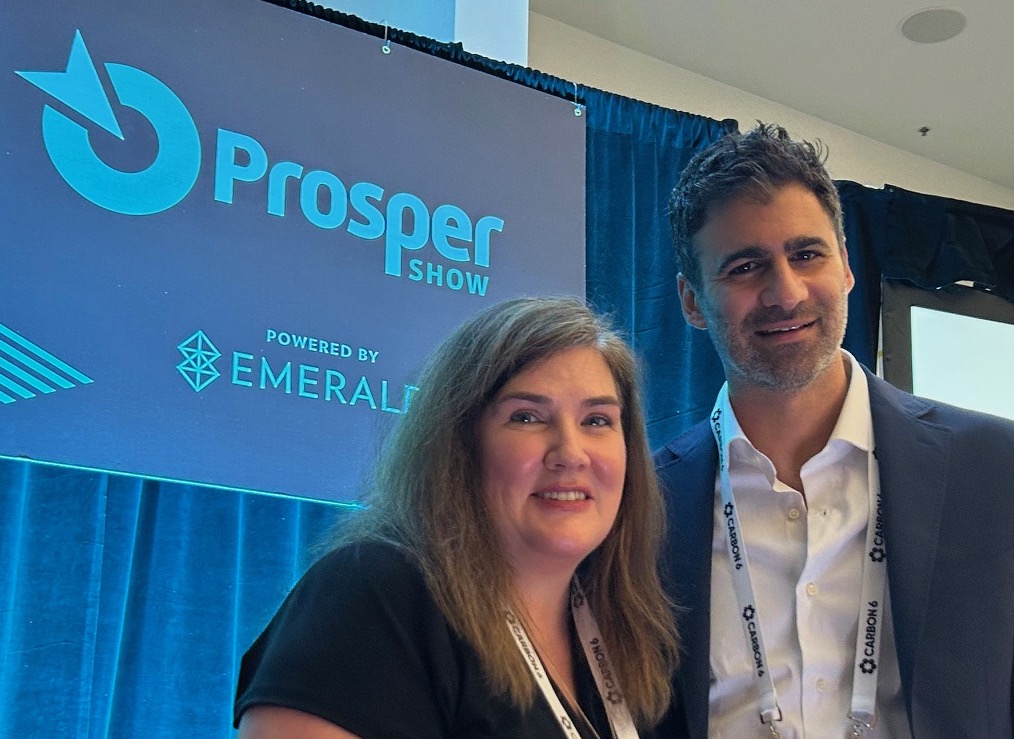April 4, 2025
LAS VEGAS – How can U.S.-based sellers compete with Chinese sellers and direct-from-China websites? Lesley Hensell and Joe Zalta, co-founders of New Jersey-based Riverbend Consulting tackled the topic on the final day of Prosper Show.
“They are kicking everyone’s butts,” Hensell says. “Chinese companies often use a shipping loophole called de minimis where they’re allowed to ship any amount of product into the U.S. as long as the value is under $800 without any duty. That’s not a fair playing field, right?”
In contrast, U.S.-based sellers are paying anywhere between 15% and 35% on goods they are bringing in. Amazon has gotten into the act via Amazon Hall, which Hensell explains is “invitation only and Chinese sellers only.”
 How can sellers compete? Zalta and Hensell point out that, “Very rarely do we see Chinese sellers doing any type of social media marketing.” That lack of marketing is an opportunity for those who know how to build a brand.
How can sellers compete? Zalta and Hensell point out that, “Very rarely do we see Chinese sellers doing any type of social media marketing.” That lack of marketing is an opportunity for those who know how to build a brand.
“I have seen a million Chinese listings and very rarely do they tell the story the way U.S. consumers need to be told, and need to understand it,” Zalta says. “Focus on details and functions of your product and communicate that in a visual way through videos. Branding and really nice imagery and photo shoots are huge and help to differentiate and separate yourself.”
According to Hensell, social media advertising is another tool because few Chinese brands are doing Facebook ads, Google ads, and YouTube videos. “Put together a full marketing plan, even if you have one product or if you have a small brand—it’s very important,” she says. “With AI it does not have to be super expensive. Use TikTok creators to drive traffic, even to your Amazon listing. Yes, there are Chinese sellers on TikTok, but if you’re building your brand and you’re getting multiple touch points from TikTok, Google, Facebook, and Amazon, you will get that halo effect on your Amazon listing and it will help your organic growth.”
Price is still important, as is making sure that your product is excellent, functional, and comes with the right colors, sizes, and key features. “You cannot bring in a product that’s not thoroughly researched,” Hensell adds. “The customer is so smart, the reviews are so transparent. Make sure it’s a product that you believe in and make sure that it’s filling the need that the customer has.”
Quality and safety are still important for buyers, particularly moms. “Much of the time, I am your target buyer,” Hensell explains. “I am the woman in a household with children. I am the one who makes a lot of buying decisions and spends a lot of the money. There are certain categories where people really want it made in the U.S. They want to trust the ingredients.”
Hensell shared the example of a supplement that is “selling like crazy” with the main ingredient of grass-fed beef. “All of these copycat products have popped up from China, saying that they are made with grass-fed beef,” Hensell says. “Anyone believe that it’s grass fed beef? I don’t. So if I am shopping for this particular product, I am really looking for the made in the USA…Products in the beauty category that require certain certifications can also be attractive for those who seek made-in-the-USA products.”
